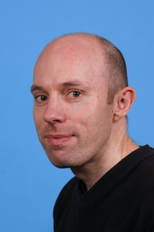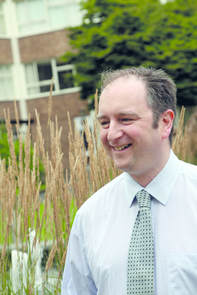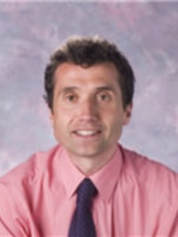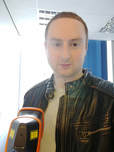|
pROF PHILIP MARTIN
Philip Martin is a Professor in the School of Chemical Engineering and Analytical Science. He has a first degree in Chemistry from the University of Oxford and a PhD from Cambridge in physical chemistry in the group of Professor Paul Davies. Following this he held a Royal Society European Fellowship at the Universite de Paris-Sud/CNRS in Orsay in the group of Guy Guelachvili. Following this he spent three years in the group of Professor John Maier FRS at the University of Basel in Switzerland where he worked on laser spectroscopy of free radicals and molecular ions. In 1993 he took up a position at the University of Huddersfield where he developed techniques in applied spectroscopy and environmental technology using novel laser sources. He moved to Manchester in 2002. In the School he has held roles of Interim Head of School, Director of Research, Director of Post-Graduate Research and Director of Taught Postgraduate. He has research labs in the Mill Building and Photon Science Institute. Recently he has become a Fellow of the Royal Society of Chemistry and also a Fellow of the Institute of Physics. He founded the spin-off company TDL Sensors Ltd which was recently sold. His current research interests are in process analytical technology, chemical reaction engineering, plasma processing and nuclear decontamination. |
|
prof barry lennox
Barry Lennox is Professor of Applied Control and Nuclear Engineering Decommissioning in the School of Electrical and Electronic Engineering at The University of Manchester, Director of the EPSRC Robotics and Artificial Intelligence for Nuclear Robotics Hub and Research Director of the Dalton Cumbrian Facility. He is an expert in applied control systems and their use in process operations and robotics and has considerable experience in transferring leading edge technology in to industry. He co-founded Perceptive Engineering, a process control solution provider who now employ 30 FTEs and developed the Acoustek pipeline monitoring system, which is now used routinely to detect blockages in subsea natural gas pipelines in the North Sea, USA and Asia. Barry is the research lead for the Nuclear Engineering Decommissioning theme within the Dalton Nuclear Institute and the Robotics theme within the School of Electrical and Electronic Engineering. He leads the £5M EPSRC Programme Grant, Robotics for Nuclear Environments and leads the robotics work within TORONE. |
|
Prof nicholas smith
Prof. Nick Smith has been NNL Fellow in geocharacterisation and remote laser and quantum sensing since 2014 and is also Technology Manager in geology, GIS, laser sensing and 3D visualisation within NNL’s Environmental Characterisation Team. He completed a prestigious Royal Society Industry Fellowship between 2013 and 2017 in remote laser characterisation in extreme nuclear environments which involved spending 50% of his time at the University of Manchester where he holds a Visiting Professorship (within the School of Mechanical, Aerospace and Civil Engineering). Nick has a degree in geology and a PhD in structural geology and basin dynamics both from Keele University, and an MSc in geographical information science from Manchester Metropolitan University. |
|
prof malcolm joyce
Malcolm Joyce is Professor of Nuclear Engineering at Lancaster University in the UK. His research interests include applied radiation detection & measurement, decommissioning-related analytical methods and nuclear policy & environmental assay. He is author on > 140 refereed journal articles and has specialized of late in digital mixed-field radiation assay with fast, organic liquid scintillation detectors. Malcolm has a BSc (Hons.) in physics, a PhD in g-ray spectroscopy and a DEng in digital fast neutron assay. He was a member of the UK Government's Nuclear Industry Research Advisory Board (NIRAB) and is co-chair of UK’s National Nuclear Users' Facility (www.nnuf.ac.uk). In 2014 his team were awarded the James Watt medal by the Institution of Civil Engineers (www.ice.org.uk) for best paper in the journal Proc. ICE (Energy) for research on the depth profiling of radioactive contamination in concrete. In 2016 he was awarded a Royal Society Wolfson Research Merit Award. |
|
Dr Michael Aspinal
Dr Aspinall's research began during his degree in Mechatronic Engineering (2005) with contributions towards the design and implementation of an advanced neutron spectrometer funded by an EPSRC Instrumentation Development Award (GR/R38538/01). His PhD (2008) was sponsored by the Think Crime! EPSRC research project (EP/C008022/1) which formed the DISTINGUISH consortium. His work here specifically focused on real-time digital assay of mixed radiation fields with prominent developments in real-time, digital pulse-shape discrimination of neutrons and gamma rays. Further extensive work led to the embodiment of these findings into technology with a TRL 9 that has served several nuclear establishments supporting additional research in nuclear safeguards, non-proliferation, neutron imaging and fast-neutron multiplicity analysis. Most notably, during his time in industry, he oversaw the delivery of the bespoke processing hardware and software for the ADRIANA liquid scintillator array at Lancaster University as part of the National Nuclear User Facility (NNUF) (EP/L025671/1). He currently holds the position of International Senior Lecturer in Digital Electronics at Lancaster University. As part of the TORONE consortium he is responsible for overseeing the ruggedised acquisition and analytical hardware and software implementations for the characterisation of radioactive contaminants. |
PDRA
|
Andy West
Andy joined the UoM Robotics group in 2017, previously conducting research on x-ray lasers at the University of York for Inertial Confinement Fusion. He received his PhD in Plasma Physics from the University of York in 2016, specialising in plasma diagnostics for industrial processes and cancer research. His current role is to integrate the various diagnostics of the TORONE project onto a robotic platform through the use of ROS (Robot Operating System). It also includes enabling operators to visualise data from these sensors both in real-time and archiving for the future using a suitable GIS (Geographic Information System) solution. |
|
Ioannis Tsitsimpelis
Ioannis Tsitsimpelis obtained his PhD in Engineering from Lancaster University. His research interests include data-based modelling and control, radiation detection, electronics, and digital signal processing. He is currently a postdoctoral research associate for the TORONE project, and he is involved in: the assessment of synthetic diamond and cerium bromide in extreme gamma-ray and neutron environments, the instrumentation with regard to radiation |
|
Paul Coffey
Dr Coffey has degrees in Physics and Computational Physics and a PhD in Bio-Physics. Paul has specialised in the development and design of analytical instruments and the modelling of the acquired data; in particular surface science techniques. He is also an expert in surface science measurements, utilising a wide range of neutron, x-ray and photonic technologies. Paul has held instrumentation development positions within Biolin Scientific, the Schools of Physics & Astronomy, Chemical Engineering & Analytical Sciences and in Earth & Environmental Sciences at the University of Manchester. In recent years Paul has enjoyed researching and developing technologies such as Raman spectroscopy, tuneable diode laser absorption spectroscopy and laser induced breakdown spectroscopy (LIBS) for applications in the aerospace, solar panel and in the nuclear industry. |








